A thoughtful and engaging story about intersectionality and finding both personal and communal identities.
Chinese American seventh grader Sophie Hu is looking forward to her school’s celebration of cultures, the Rainbow Fair. She’ll be running the Chinese booth with her best friend Katie, also Chinese American, as they’ve done before. But Katie, recently out as bi, has just gotten approval for an LGBTQ+ booth that she had campaigned for. School rules mandate that students can only work on one booth, however, so Katie will no longer be helping with the Chinese one.
The exploration of intersectionality gets more complex as Sophie also begins to consider her Muslim identity. Other than not eating pork, her family isn’t observant. Her parents also don’t talk publicly about being Muslim, and Sophie has followed their lead. Muslims she has seen on television don’t look like her—they’re of Middle Eastern heritage, not Chinese. Sophie therefore has little idea of what it means to be Muslim and feels she must be an inauthentic one.
When a teacher inadvertently learns that Sophie is Muslim and overenthusiastically assigns her to run a Muslim booth at the fair, Sophie is cautiously excited about the chance to learn more about this part of her identity, even though it means giving up her participation in the Chinese booth. She’s worried about her parents’ reaction to this switch, however, given their previous enthusiasm for the Chinese booth and the way they downplay their Muslim identity.
Sophie forges ahead, however, and with the help of a new Turkish American student in the school, who is also Muslim, starts to learn more about her faith. She’s grateful for a new friend, since Katie is spending more time with her LGBTQ+ ones.
The challenges for Sophie and for the Rainbow Fair continue. A member of the LGBTQ+ club tells her she’s heard that Muslims believe in stoning gay people, and wonders how Sophie can be both Muslim and friends with them. All of the Robotics Club members but one signed up to do the Norwegian booth (even though they’re probably not all Norwegian) so they could be together—excluding the one non-White member. And it becomes clear that students of other identities are also struggling with the constraints of the fair. Sophie ultimately engages the other students in trying to create change.
In addition to showing the multiple identities her characters hold, author Diana Ma also shows how a single identity—Chinese, Muslim, or even ”Chinese Muslim”—can have many different meanings and expressions. We also see some similarities across disparate identities, such as experiencing microaggressions, coming out about the identity, and feeling “inauthentic” because of certain assumptions.
Despite all of the messages here, the story is readable and fun, with a relatable protagonist and well-crafted first-person perspective that never feels pedantic, even as it clearly conveys its themes.
The cast is happily diverse across many racial and ethnic identities. In addition to Katie, other members of the LGBTQ+ club include a two-girl couple and a nonbinary student. Ma also gets bonus points for shouting out other middle grade books that celebrate intersectional identities, such as C. B. Lee’s Not Your Sidekick and Leah Johnson’s You Should See Me in a Crown.
Although school events like the Rainbow Fair are under threat right now by attempts to ban DEI (diversity, equity, and inclusion) in education, this book plays a dual role in showing both how such events can be mishandled (the school’s initial “one identity per student” approach) and why they remain important in helping students to understand themselves and those around them. We can and should improve our DEI efforts even as we seek to save them.
A highly recommended title for readers of all identities.






